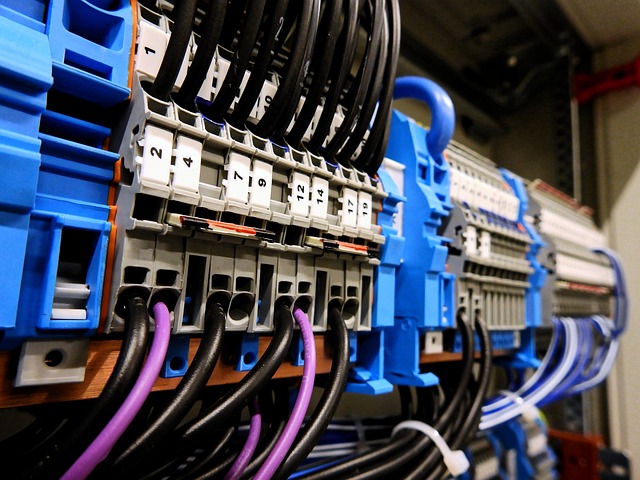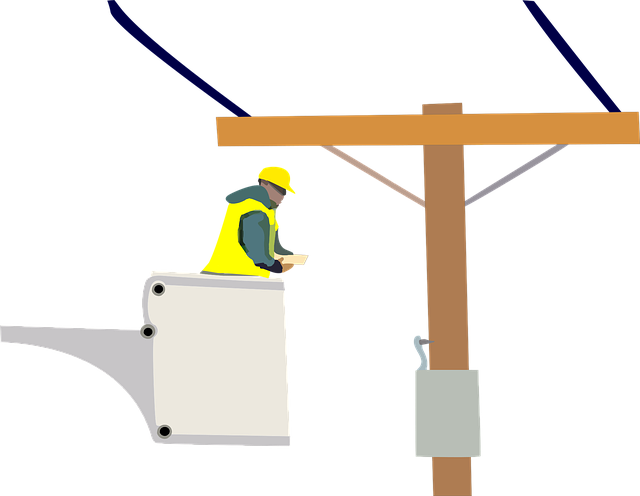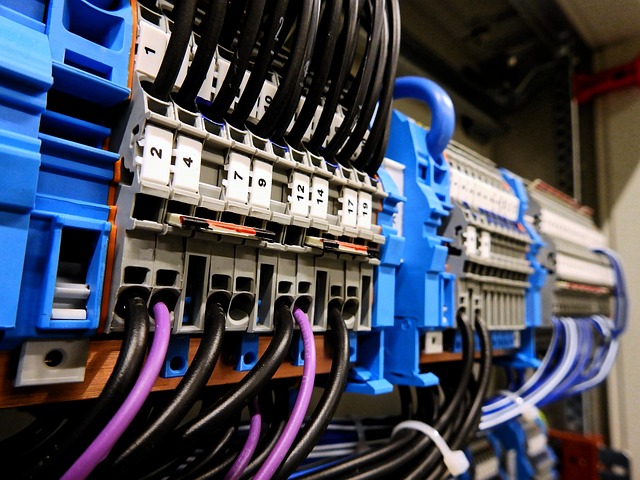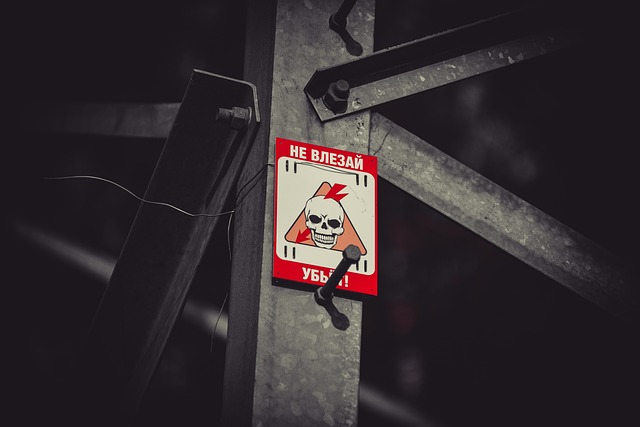Home electrical issues often stem from switches, receptacles, and outlets—crucial for power distribution. These components can fail due to aging wiring, wear, moisture, or poor installation. An electrician addresses problems like flickering lights (faulty switches), burning smells (overloaded circuits), and non-functioning outlets. Regular inspections and timely repairs/replacements prevent electrical hazards. Cost-effectiveness guides repair vs. replacement decisions. Using proper tools and safety measures, such as disconnecting power and wearing protective gear, is essential when repairing or replacing these parts. For complex tasks, hiring a electrician ensures safe, reliable outcomes while adhering to local standards, avoiding costly mistakes, and saving money in the long run.
Are your home’s switches, receptacles, and outlets acting up? Learn how to tackle common electrical issues with our comprehensive guide. We’ll walk you through understanding problems, deciding when to repair or replace, and even provide a step-by-step process for safe and effective fixes. From tools needed to hiring a professional electrician, gain the knowledge to ensure your home’s electrical safety and save on costly repairs. Trust these tips to empower you as a homeowner and potentially avoid the need for an electrician.
- Understanding Common Electrical Issues: Switches, Receptacles, and Outlets
- When to Repair vs. Replace: A Cost-Effective Guide
- Tools and Safety Precautions for the Job
- Step-by-Step Process: Repairing and Replacing Electrical Components
- Hiring a Professional Electrician: Tips and Benefits
Understanding Common Electrical Issues: Switches, Receptacles, and Outlets

Many home electrical issues stem from problems with switches, receptacles, and outlets—the very components that control and distribute power throughout your home. Over time, these parts can wear out, become damaged, or malfunction due to various factors such as aging wiring, frequent use, exposure to moisture, or poor installation.
An electrician often encounters issues like flickering lights caused by faulty switches, overloaded circuits indicated by burning smells from receptacles, or non-functioning outlets that prevent appliance operation. Identifying and addressing these problems promptly is crucial for both safety and the longevity of your home’s electrical system. Regular inspections and timely repairs or replacements can help avert more serious electrical hazards.
When to Repair vs. Replace: A Cost-Effective Guide

When deciding between repairing or replacing electrical switches, receptacles, and outlets, cost-effectiveness is a key consideration. Often, simple repairs like tightening connections or replacing worn-out parts can extend the life of your existing hardware, saving you on installation costs. An electrician can help assess these issues quickly, recommending repairs where feasible.
However, if the damage is extensive, or the device is outdated and prone to frequent failures, replacement may be more economical in the long run. Outlets and switches that frequently malfunction indicate potential wiring problems or a lack of grounding, which could lead to safety hazards. In such cases, a professional electrician should handle both repair and replacement to ensure the work is done safely and correctly, preventing future issues and ensuring your peace of mind.
Tools and Safety Precautions for the Job

When tackling repairs or replacements of switches, receptacles, and outlets, whether as a DIY project or under the guidance of a qualified electrician, it’s crucial to arm yourself with the right tools and prioritize safety measures. Standard tools for this task include wire strippers, voltage testers, pliers, screwdrivers, and a multimeter. These tools enable accurate measurements, safe disconnection from power sources, and precise installations.
Safety precautions are paramount in electrical work. Always ensure power is disconnected at the main circuit breaker or fuse box before beginning. Wear protective gear such as insulated gloves and safety glasses to shield against potential hazards. Keep your work area well-lit for clear visibility. Understand your electrical system and its complexities; if unsure, consult a licensed electrician. Regular maintenance and prompt attention to faulty components contribute to a safer home environment.
Step-by-Step Process: Repairing and Replacing Electrical Components

Repairs or replaces switches, receptacles, and outlets: A Step-by-Step Process
The first step in repairing or replacing electrical components is to turn off the power at your main electrical panel. This ensures safety during the process. Once the power is cut, use a voltage tester to confirm that there’s no electricity flowing to the circuit you’re working on. Next, locate and remove the old switch, receptacle, or outlet carefully. Take note of how it was wired and the order of the wires connected. This information will be crucial for installing the new component accurately.
With the old part removed, gather the necessary tools and materials—a new switch, receptacle, or outlet, wire strippers, pliers, and electrical tape. Re-wire the new component according to the original setup, ensuring each wire is securely connected to the correct terminal. After double-checking your work, tightly wrap each connection with electrical tape for insulation and safety. Finally, install the new electric component by screwing it into place and flipping the power back on at your main panel. Always consult an electrician if you’re unsure or dealing with complex wiring issues.
Hiring a Professional Electrician: Tips and Benefits

When tackling home electrical repairs, especially involving switches, receptacles, or outlets, one crucial decision is whether to do it yourself or hire a professional electrician. While DIY projects can be satisfying, electric work is best left to experts due to potential hazards. An electrician has the training and tools to ensure safe and reliable results.
Hiring a qualified electrician offers numerous benefits. They provide expert knowledge, ensuring your electrical system complies with local safety codes. Professionals use high-quality components, preventing future issues. Moreover, they offer peace of mind by identifying potential risks and offering long-term solutions. An experienced electrician can also help you avoid costly mistakes, saving you money in the long run.
When tackling electrical repairs, knowing when to fix or replace switches, receptacles, and outlets is key. By understanding common issues and following a cost-effective guide, you can make informed decisions. With the right tools and safety precautions, many DIYers can handle basic replacements. However, for more complex jobs, hiring a professional electrician ensures safety and longevity. Whether navigating through a labyrinth of wires or simply swapping out worn-out components, having a reliable electrician on hand is a game-changer, providing peace of mind and enhancing your home’s electrical symphony.
